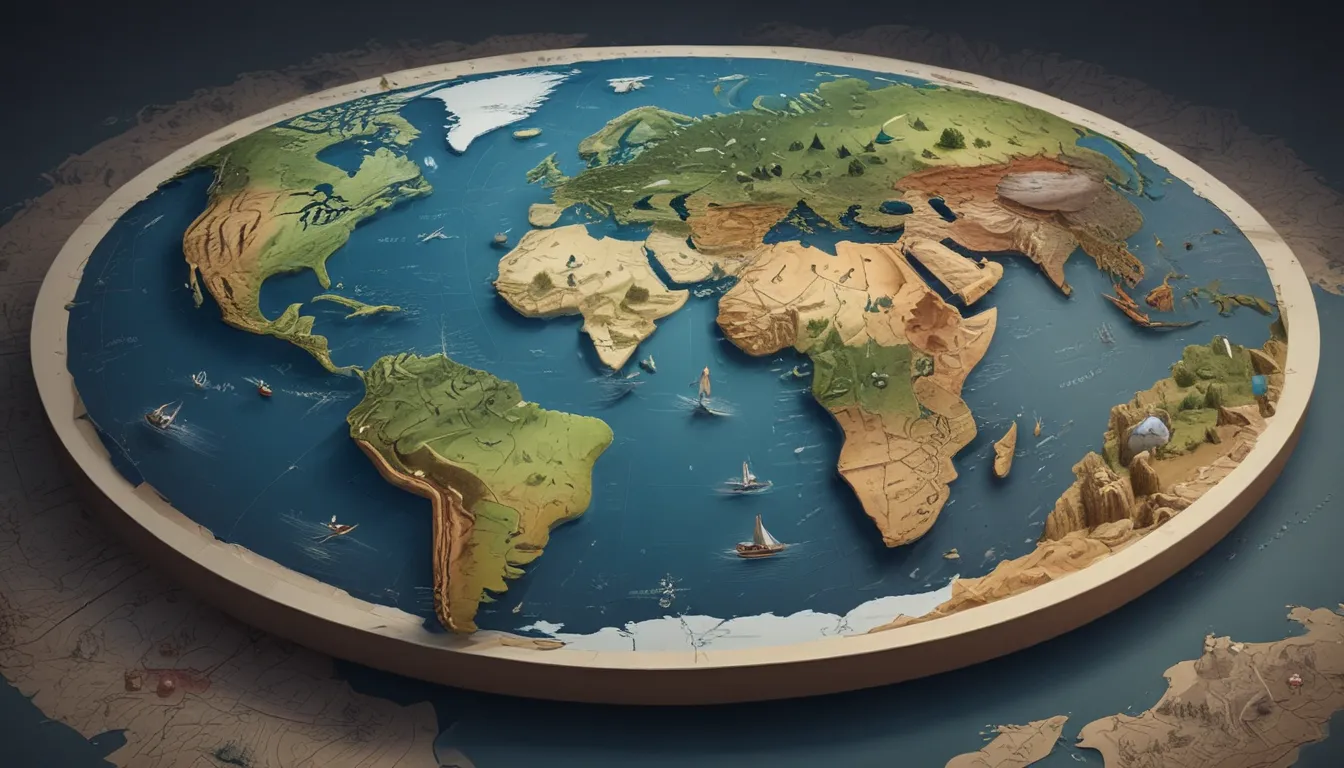A Note About Images: The images used in our articles are for illustration purposes only and may not exactly match the content. They are meant to engage readers, but the text should be relied upon for accurate information.
In the vast realm of geography, there exists a powerful tool that has redefined the way we perceive spatial relationships and analyze data – Geographic Information Systems (GIS). This technology, known as GIS, enables us to capture, store, analyze, and present geographic data in an interactive and visual manner, going far beyond the traditional use of maps for navigation. In this article, we will delve into 8 surprising facts about GIS that will not only enlighten but also inspire you. From its diverse applications across various industries to its impact on daily life, let’s embark on a journey to unravel the wonders of Geographic Information Systems!
Key Takeaways:
- GIS transcends mere mapmaking, providing a platform to capture, analyze, and present data related to Earth’s surface, empowering informed decision-making based on geographical information.
- With a wide array of applications ranging from disaster management to wildlife conservation and precision agriculture, GIS is revolutionizing industries and decision-making processes worldwide.
GIS is more than just maps
Geographic Information System, commonly known as GIS, serves as a sophisticated technology that extends far beyond the creation of maps. It acts as a robust tool that captures, analyzes, and presents data pertaining to locations on Earth’s surface, enabling users to delve deeper into spatial patterns, track changes over time, and make informed decisions grounded in geographical data.
GIS has a wide range of applications
The utility of GIS extends across various sectors and industries, encompassing urban planning, environmental management, transportation, healthcare, agriculture, and emergency response. Professionals in these fields leverage GIS to collect, visualize, and interpret geographical data, thus fostering enhanced decision-making processes.
GIS can be used in disaster management
In times of crisis and calamity, GIS emerges as a critical asset in disaster management efforts. This technology aids organizations in planning, responding to, and recovering from natural or man-made disasters by enabling emergency responders to assess risks, allocate resources, and make real-time decisions based on geospatial information.
GIS helps in wildlife conservation
The conservation of wildlife is a noble endeavor facilitated by GIS technology, which aids in tracking animal populations, monitoring habitat changes, and identifying regions of high biodiversity. By leveraging spatial data, researchers can make informed choices regarding the protection of endangered species and the preservation of their natural habitats.
GIS supports transportation planning
Efficient transportation planning is vital for optimizing routes, analyzing traffic patterns, and managing infrastructure – a realm where GIS plays a pivotal role. By aiding authorities in making informed decisions regarding road networks, public transportation, and traffic management, GIS contributes to enhancing efficiency and reducing congestion.
GIS is essential for precision agriculture
In the agricultural domain, GIS technology is heralding a revolution by assisting farmers in resource management, crop monitoring, and yield prediction. Through the analysis of soil conditions, assessment of crop health, and optimization of irrigation practices, farmers can achieve increased productivity and sustainability in their endeavors.
GIS integrates with other technologies
The seamless integration of GIS with emerging technologies such as remote sensing, Internet of Things (IoT), and artificial intelligence (AI) amplifies data collection, analysis, and interpretation capabilities. This synergy paves the way for innovative applications in smart city planning, environmental monitoring, and beyond.
GIS is evolving with cloud-based solutions
The emergence of cloud-based GIS platforms has democratized access to spatial data, fostering collaboration and accessibility like never before. By empowering users to store, share, and analyze geospatial data in real-time, these platforms enable organizations to make data-driven decisions swiftly and efficiently.
Indeed, these 8 eye-opening facts about GIS illuminate the profound impact of Geographic Information Systems on diverse industries and decision-making processes. As we journey forward, the evolution of GIS holds promising possibilities, empowering individuals and organizations to harness the potential of spatial data for a more sustainable and interconnected world.
Conclusion
Geographic Information Systems (GIS) stand as formidable tools that have transformed our understanding and interaction with geography. The realm of GIS enables us to analyze and visualize spatial data in unprecedented ways, spanning a spectrum from mapping and navigation to urban planning and disaster management. Throughout this discourse, we have unearthed remarkable facts about GIS, ranging from its use in wildlife conservation to its potential for smart city planning and cultural heritage preservation. As GIS continues to evolve, it is poised to shape the future of geography and deepen our comprehension of the world around us, serving as an invaluable asset in the realm of geospatial analysis.
FAQs
- What is a Geographic Information System (GIS)?
-
A Geographic Information System (GIS) is a computer-based system that captures, stores, analyzes, and presents spatial or geographic data, facilitating visualization, interpretation, and understanding of patterns and relationships within the data.
-
What are some common applications of GIS?
-
GIS finds applications in diverse fields such as urban planning, natural resource management, transportation analysis, disaster management, environmental monitoring, and market research, among others.
-
How does GIS aid in decision-making processes?
-
By providing a visual representation of data, GIS enables decision-makers to identify patterns, trends, and correlations, facilitating informed choices and effective strategies based on spatial analysis.
-
Can GIS be used for mapping purposes only?
-
No, GIS encompasses not only mapping but also sophisticated tools for spatial analysis, data management, and visualization, extending its utility beyond mere cartography.
-
Is GIS limited to Earth-related applications?
-
No, GIS can be utilized for mapping and analyzing spatial data of other celestial bodies within our solar system, as evidenced by its application in studying Mars, the Moon, and other planets.
-
What skills are necessary to work with GIS?
-
Proficiency in GIS necessitates knowledge of spatial analysis, data management, cartography, remote sensing, and programming languages like Python, alongside strong problem-solving and critical-thinking skills.
-
What are some future advancements in GIS technology?
-
Future advancements in GIS technology entail the integration of artificial intelligence, machine learning algorithms, and real-time data processing to enhance the accuracy and efficiency of GIS analysis.
-
How can I get started with GIS?
- Initiating your journey into GIS involves exploring online courses, tutorials, and resources dedicated to GIS learning. Additionally, you can download open-source GIS software like QGIS or utilize commercial software such as ArcGIS, accompanied by practice with publicly available geospatial datasets.
Embrace the wonders of Geographic Information Systems (GIS) as you embark on a journey to explore the realms of spatial data analysis and visualization. Unleash the potential of GIS in transforming decision-making processes and revolutionizing industries, shaping a more sustainable and interconnected world.






